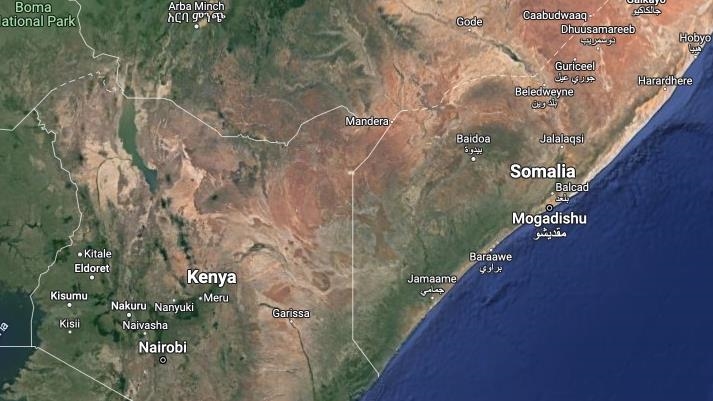3 QUESTIONS - Reopening Kenya-Somalia land border
Move to facilitate development of diplomatic relations between 2 prominent East African countries

The author is a PhD student in the Department of Political Science and International Relations at Istanbul University.
ISTANBUL
The effects of the reopening of the Kenya-Somalia border is discussed here in three questions.
Why was the Kenya-Somalia border closed?
The Kenya-Somalia border in East Africa has always been problematic since the fall of the Somali government in 1991.
The border was closed in 2011 by the administration of former Kenyan President Mwai Kibaki following attacks by the al-Shabaab terror group. The closure of the 700-kilometer (435-mile) border aimed to prevent attacks by al-Shabaab, which included the abduction of tourists and foreign aid workers on Kenyan soil.
The Al-Shabaab terror group has been actively involved in peacekeeping operations in Somalia under the auspices of the African Union since 2011 and carried out notable attacks in Kenya.
Since 2011, Kenya has been targeted with several attacks claimed by the Al-Shabaab terror group, including the Westgate shopping mall attack in Nairobi in September 2013, the attack on Garissa University in April 2015 and the attack on the Dusit hotel complex in January 2019.
The deadliest attack was carried out on Garissa University in 2015, killing 150 people.
More than 300 Kenyan villagers have been killed in retaliatory attacks by the terror group in response to harassment fire from Kenyan soldiers since 2013.
Al-Shabaab's attacks have not been limited to Kenya's northern region; they have also affected the region from Lamu in the east to Mombasa, the heart of the tourism sector in the country.
What were the effects of the closure of the Kenya-Somalia border?
Somalia and Kenya are strategic partners in countering the al-Shabaab terror group, therefore, the closure of the Kenya-Somalia border had multidimensional effects, including socio-economic, cultural and trade impacts.
The closure of border points weakened the economic activities of Kenyans living in border villages and had a negative impact on their social lives.
During the period of the border closure, fishermen and traders were unable to freely cross from Kenya to Somalia, leading to disruptions in the fishing trade in the Ishakani, Ras Kamboni and Sarira.
The majority of the Kenyan Lamu residents, reiterated their demands upon the opening of the borders, earning money from fishing.
Mohamed Somo, the chairman of the Lamu Fishermen Beach Management Units Network, said the closure of the border had negative consequences in terms of their livelihoods.
The closure of the border also had adverse effects on the social lives of communities residing close the border.
Residents in Kiunga, Ishakani, Ras Kamboni and Sarira, who had married Somalis from Kismayo and Mogadishu, had to live separated from their families during the period of the border closure.
The situation resulted in long-term damage to family relationships.
Additionally, the health center in Kiunga was the only facility where pregnant Somali women and children coming from Ras Kamboni and neighboring areas could receive treatment.
Numerous women and children were unable to cross into the Kiunga region due to the border closure as they were deprived of health services.
The border restrictions, stemming from security concerns, paradoxically exacerbated instability in the region.
Somali Security Minister Abdirizak Omar Mohamed stated that the majority of potential terrorists infiltrating among refugees were already in Kenya. [1]
According to Omar, the border restrictions proved to be ineffective and futile in countering al-Shabaab terror group's attacks.
Furthermore, the border closure facilitates the illegal drug trade and human trafficking.
How will the reopening of the border affect the relationship between the two countries?
The Cabinet Secretary of Interior and Administration of National Government, Kithure Kindiki, announced that Kenya and Somalia have agreed to reopen three border points that have been closed between the two countries.
The three border points, namely Mandera-Belet Hawo (Belethawa), Liboi Harhar-Dhobley and Kiunga-Ras Kamboni are set to open July 1.
Considering that individuals of Somali ethnicity can also be Kenyan citizens and share a common culture, the decision to reopen the borders is expected to normalize and accelerate trade, economic and cultural relations.
The decision is in line with the African Continental Free Trade Agreement (AfCFTA), aimed at promoting intra-African trade, is a significant step toward enhancing trade and diplomatic relations between the two countries.
The opening of border will lead to job creation for the local population.
It will deeply influence how the two countries perceive each other and interact, and most importantly, it will contribute to significant gains in counter-terrorism efforts.
The opening of the border points will enhance border security and disrupt the flow of illicit goods used to finance terror activities.
Moreover, it will enable joint patrols in counter-terrorism operations and facilitate intelligence sharing.
Diplomatic relations between Somalia and Kenya had reached a breaking point in 2020 due to a dispute about the direction of maritime boundaries in the Indian Ocean region.
Therefore, the opening of the Somali-Kenya border will facilitate the development of diplomatic relations between the two prominent countries in the region and contribute to long-term peace and stability in the area.
[1] https://globalchallenges.ch/issue/4/combating-terrorism-on-the-somalian-border-the-improbable-kenyan-dream/
*Opinions expressed in this article are the author's own and do not necessarily reflect the editorial policy of Anadolu.







